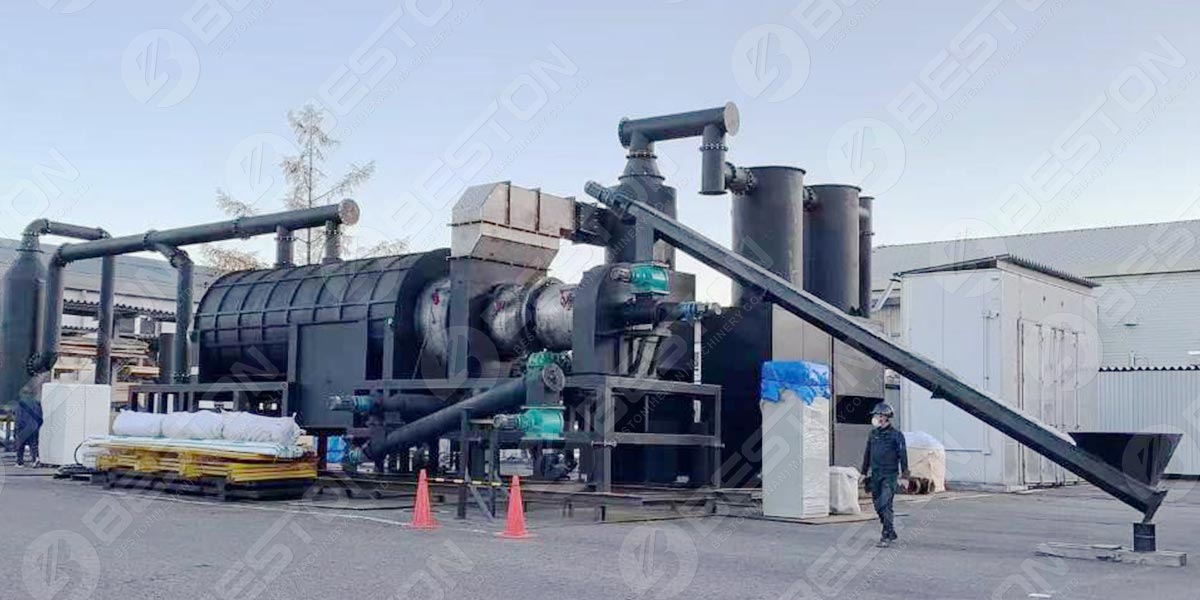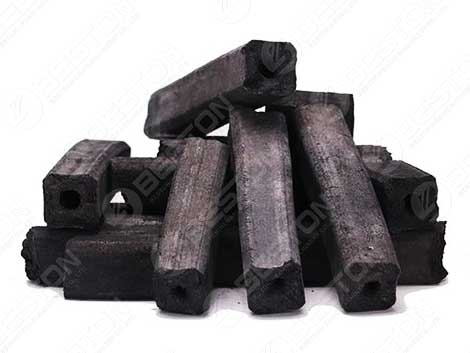In the age of environmental awareness and sustainability, the concept of transforming waste into valuable resources has gained significant traction. One of the most promising methods in this domain is the conversion of biomass waste into charcoal. This process not only provides a sustainable solution for waste management but also produces a versatile and eco-friendly product. This article explores the principles, benefits, and methods of converting biomass to charcoal, highlighting the role of this practice in promoting a circular economy.
Understanding Biomass and Its Potential
Biomass refers to organic material derived from plants and animals. It includes agricultural residues, forestry by-products, animal manure, and even certain types of waste. Biomass is abundant and renewable, making it a prime candidate for sustainable energy and material production. When left untreated, biomass waste can contribute to environmental pollution through decomposition, releasing methane and other greenhouse gases. Converting this waste into charcoal with charcoal making machine not only mitigates these emissions but also creates a useful product.

The Process of Converting Biomass to Charcoal
The conversion of biomass to charcoal involves several steps, primarily centered around the process of pyrolysis. Pyrolysis is the thermal decomposition of organic material in the absence of oxygen, leading to the formation of charcoal, bio-oil, and syngas. Here’s a detailed look at the process:
- Collection and Preparation of Biomass:
- Source Identification: Biomass can be sourced from agricultural residues (such as rice husks, coconut shells, and corn stalks), forestry by-products (sawdust and wood chips), and urban organic waste.
- Preprocessing: The collected biomass is cleaned, dried, and sometimes shredded to ensure uniformity and improve the efficiency of the pyrolysis process.
- Pyrolysis:
- Loading: Prepared biomass is loaded into a pyrolysis reactor. The type of reactor used can vary, including traditional kilns, modern retorts, and continuous pyrolysis systems.
- Heating: The reactor of biochar making machine is heated to temperatures between 300°C and 600°C in the absence of oxygen. This heating process breaks down the biomass into smaller molecular compounds.
- Conversion: During pyrolysis, the biomass is converted into three primary products: charcoal, bio-oil, and syngas. The proportions of these products depend on the temperature and duration of the process.
- Product Collection and Utilization:
- Charcoal: The solid residue, charcoal, is collected and can be used as a fuel, soil amendment (biochar), or in industrial applications.
- Bio-Oil: This liquid by-product can be further refined into various chemicals and fuels.
- Syngas: The gaseous by-product can be used to generate heat and power, often utilized within the pyrolysis process itself to maintain energy efficiency.
Benefits of Biomass to Charcoal Conversion
- Environmental Advantages:
- Waste Reduction: Converting biomass waste into charcoal significantly reduces the volume of waste, alleviating landfill pressures.
- Carbon Sequestration: When used as biochar, charcoal can sequester carbon in the soil for centuries, contributing to carbon mitigation efforts.
- Reduced Emissions: The controlled pyrolysis process minimizes the release of methane and other harmful gases compared to natural decomposition.
- Economic Benefits:
- Value Addition: Transforming waste into charcoal adds economic value, creating marketable products from otherwise discarded materials.
- Energy Production: Bio-oil and syngas can be used as renewable energy sources, reducing reliance on fossil fuels.
- Job Creation: The biomass conversion industry can generate employment opportunities in waste collection, processing, and distribution. More information on the sawdust charcoal making machine here.
- Agricultural and Soil Health:
- Soil Improvement: Biochar enhances soil fertility by improving nutrient retention, water holding capacity, and microbial activity.
- Crop Productivity: Soils amended with biochar can lead to increased crop yields, benefiting farmers and contributing to food security.
Methods and Technologies in Biomass to Charcoal Conversion
- Traditional Methods:
- Earth Mounds and Brick Kilns: These methods are simple and low-cost, making them accessible in rural and developing areas. However, they are less efficient and environmentally friendly compared to modern technologies.
- Modern Technologies:
- Retort Systems: These closed systems improve efficiency and emission control, producing higher quality charcoal with less environmental impact.
- Continuous Pyrolysis Units: These systems allow for the continuous feeding of biomass and extraction of products, enhancing productivity and operational efficiency.
- Integrated Systems:
- Combined Heat and Power (CHP): Integrating pyrolysis units with CHP systems maximizes energy recovery from syngas, providing heat and electricity alongside charcoal production.
- Biochar Production Facilities: Dedicated biochar facilities focus on producing high-quality biochar for agricultural use, often incorporating advanced technologies for precise control over the pyrolysis process.
Challenges and Solutions
- Feedstock Variability:
- Challenge: Different types of biomass have varying properties, affecting the consistency and quality of charcoal.
- Solution: Standardizing preprocessing methods and developing adaptive pyrolysis technologies can address variability issues.
- Economic Viability:
- Challenge: High initial capital costs and fluctuating market prices for charcoal and by-products can hinder widespread adoption.
- Solution: Government incentives, subsidies, and the development of robust markets for biochar and renewable energy can enhance economic viability.
- Environmental Concerns:
- Challenge: Potential emissions and residues from pyrolysis need to be managed to prevent environmental harm.
- Solution: Implementing advanced emission control systems and ensuring proper disposal or utilization of by-products can mitigate environmental risks.
Conclusion
The conversion of biomass to charcoal presents a compelling solution for waste management and resource utilization. By transforming organic waste into valuable charcoal, we can reduce environmental pollution, enhance soil health, and create sustainable energy sources. Despite the challenges, ongoing innovations and supportive policies are paving the way for broader adoption of this technology. Embracing biomass to charcoal conversion aligns with the principles of a circular economy, turning waste into wealth and contributing to a more sustainable and resilient future. As we continue to refine and expand these practices, the potential for positive environmental and economic impacts will only grow, demonstrating that waste, when managed wisely, can indeed become a valuable resource. Find the brand of Beston Group here.
